To successfully introduce underwear while potty training, follow these steps: First, wait until your child shows readiness. Next, choose between training underwear or regular underwear. Then, make it exciting—let them pick superhero or unicorn designs! Finally, stay calm during accidents and use positive reinforcement. Consistency and encouragement turn this milestone into a confidence-boosting win!
Table of Contents
Parents need to be involved in all parts of their children’s development, including teaching them what to wear and when. While shirts and pants are easy to teach, what about underwear? How to introduce underwear while potty training your child?
Some signs will tell you when to start, and you can start by making connections between the two things. You must start small with diapers and move forward slowly to ensure your kids learn the process. Challenges will be along the way, but this guide will help you with this task. So, let’s stay calm and get through this part of your kid’s development together.
Understanding the Right Time to Introduce Underwear
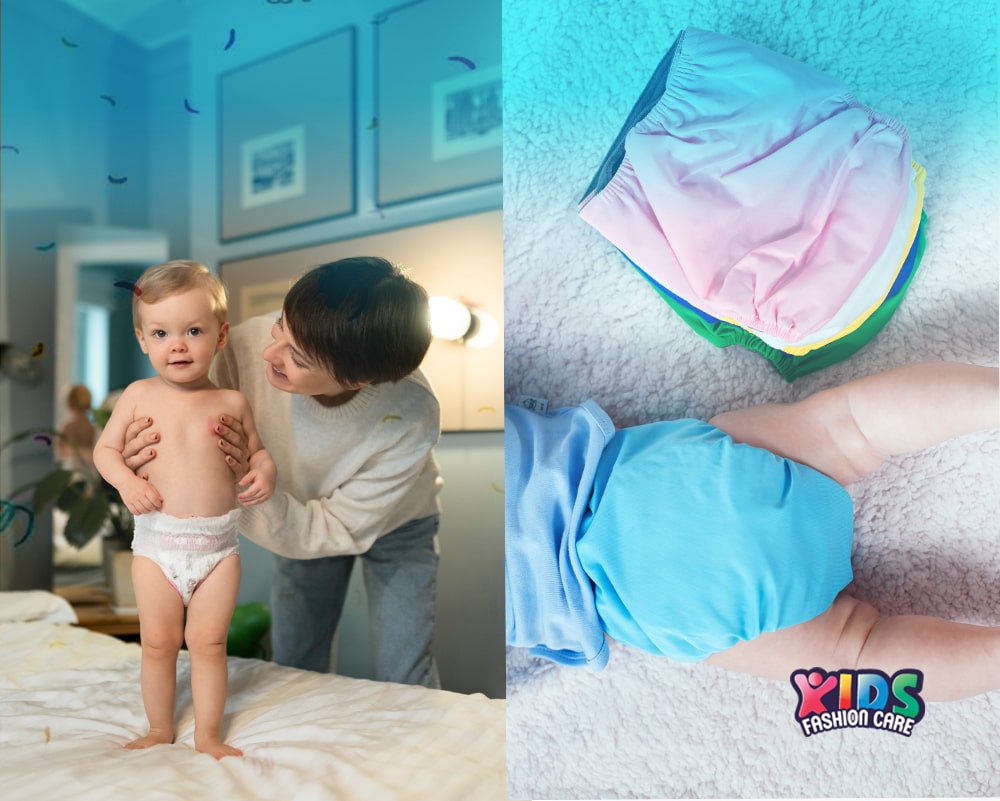
Because kids grow physically and mentally, I can’t tell you the exact age at which you should introduce underwear while potty training. But as I said, there are signs you can look for that will help you with that.
Signs Your Child Is Ready for Underwear
When they are babies, kids wear diapers, and after some time, they should switch to underwear during potty training. Parents should look for some obvious and not-so-obvious signs to know when to make the switch. And those signs are:
- Staying dry: Young children don’t have the best bladder control, so they tend to soil their diapers. But as they grow older, their bladder control becomes better to the point that they can stay dry for more than a couple of hours.
- Showing discomfort: With better bladder control comes the knowledge that kids can show discomfort when they need to go to the bathroom. If your kids can show discomfort without soiling themselves, then it means they can control their bladder.
- Communication: Aside from showing discomfort, older kids can tell that they want to go to the bathroom by themselves. This ability to communicate shows their mental growth, meaning they can safely move from diapers to underwear.
- Wanting to mimic adults: Kids, as they grow, imitate adults all by themselves. So, when you are kids who want to go the bathroom or dress themselves, it means they are growing in the right direction. Wanting to switch to underwear from diapers is a sign of that.
These are just a few of the signs that your kid is ready to be introduced to underwear while potty training. Parents can also pick up other signs on their own.
The Connection Between Potty Training and Underwear
Diapers and underwear are quite different, but kids don’t know that. Underwear doesn’t wick away moisture when kids have accidents, and that’s good. The discomfort from the accident will help kids learn that they need to go to the potty.
Initially, kids will hate the feeling and throw tantrums, but parents must be patient and gentle. They need to help the kids make the connection so that they can master potty training.
Choosing the Right Underwear for Potty Training
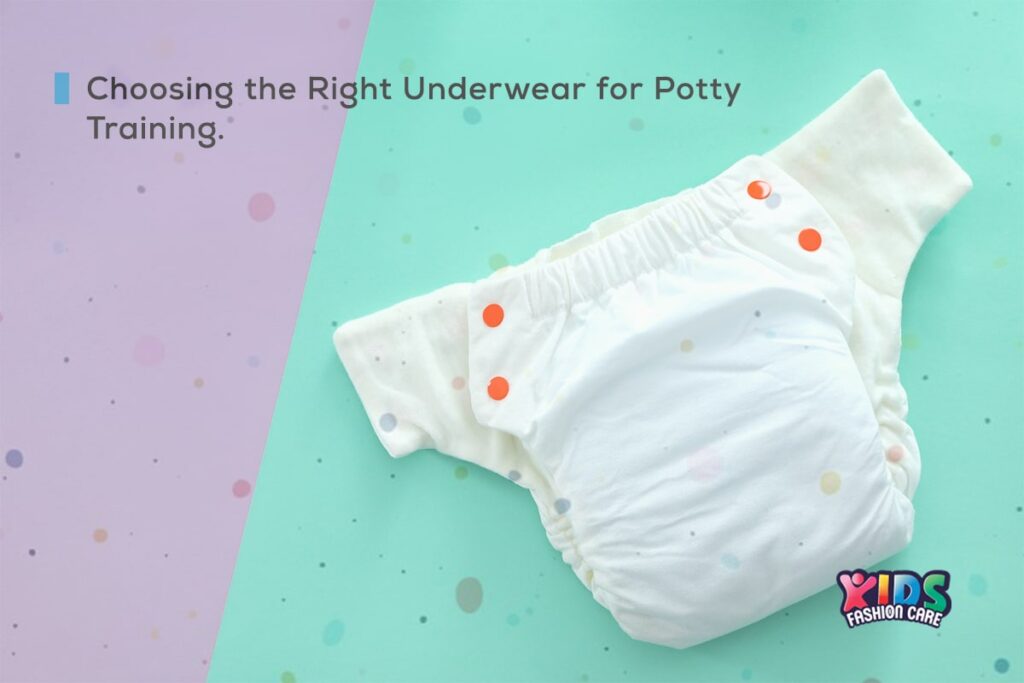
When you introduce underwear while potty training, you need to ensure that it is the right kind and fit. Otherwise, you will only make the transition process harder for yourself and your kids. Here is what you need to consider and do to ensure your kids wear the right underwear while potty training.
Training Underwear vs. Regular Underwear
Parents must decide between two kinds of underwear while potty training their kids. Both kinds have pros and cons, so the choice is up to the parents.
Training underwear is just that. It is meant to be worn on a trial basis while the kids are being potty trained. It is made with absorbent material that helps to contain accidents to a degree. Unlike diapers, it is less bulky, but it does offer more protection than regular underwear. If your kid is starting potty training, I recommend these over the regular ones, at least for a while. They can be pricier, but not by much compared to regular underwear.
Regular underwear is just like the ones the “big” kids wear, which will appeal to young kids. They are made with various materials, but the ones for younger kids are softer and less likely to itch. I recommend switching to these ones from training ones once the kids have more potty training and don’t have accidents too often. Wearing them will give the kids more independence, which is a good thing and a step towards becoming more mature.
Best Fabrics for Comfort and Accident Protection
When you buy regular underwear for kids doing potty training, you must consider the materials used to make them. As I said, regular ones are made with different materials depending on the brand. And young kids will sometimes prefer one material over another. Common materials are:
- Cotton: Breathable and soft but not very absorbent
- Bamboo: Naturally moisture-wicking and eco-friendly
- Microfiber: Quick-drying and good for on-the-go changes
Fun Designs to Motivate Your Child
A key step in introducing underwear while potty training is picking the ones your kids will want to wear. One way to do that is to buy underwear in their favorite color or design.
It helps to motivate and encourage kids to wear underwear instead of diapers. The designs will be a positive reinforcement, making kids choose one as an achievement instead of a chore.
Step-by-Step Guide to Introducing Underwear
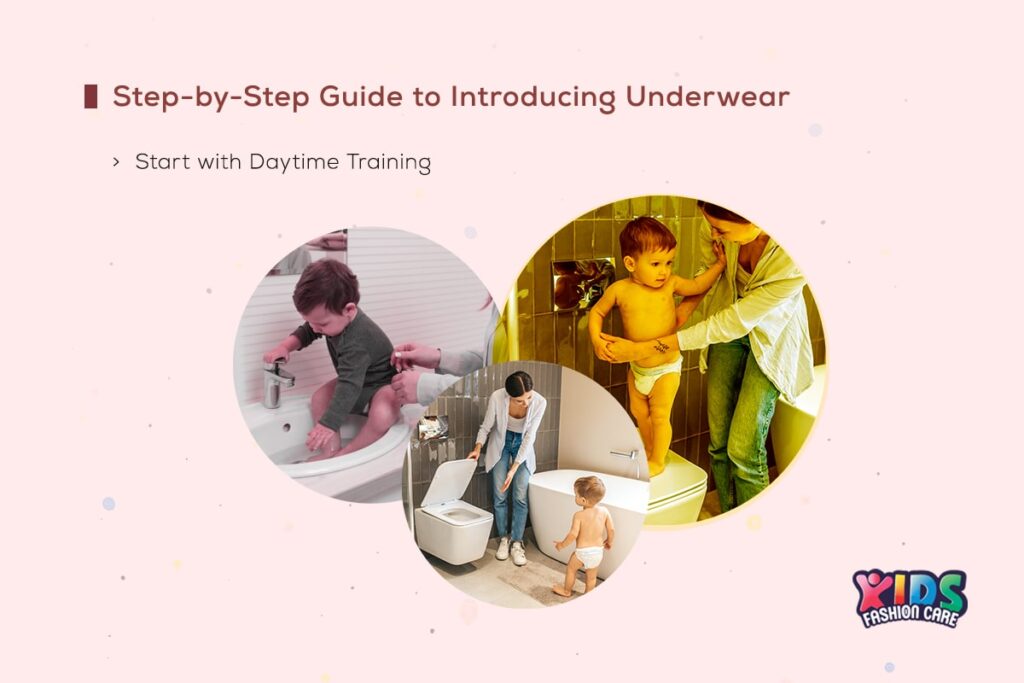
Since parents have considered the factors and have picked out the kids’ underwear, it’s time to introduce them to it while potty training. Here is my guide on how to introduce underwear while pretty training.
Start with Daytime Training
Before you introduce yourself, you need to give your kids proper daytime training on the potty. Nighttime training takes way longer, so start in the day to help your kids get used to the potty. To begin, set some kind of schedule and stick with it. The longer the routine goes on, the quicker your kids will pick up on it. I suggest going to the potty every couple of hours during the day, even when they don’t need to.
When young, kids can’t understand everything, so keep your instructions and encouragements simple. The simpler the instructions, the easier it will be for kids to pick them up. The same goes for positive reinforcement. Also, ensure your kids are wearing quick-to-get-off diapers so that the training is easier on your kids and yourself.
Use a Gradual Transition (Diapers to Underwear)
Once the kids are used to the potty, it’s time to introduce underwear. My transition process is broken into three parts to make it easier for parents to follow. The first phase is for parents to only have their kids wear underwear at home. Accidents will be easier to clean up, and you can help your kids get used to them more easily at home.
Once your kid is more used to them, start having your kid wear training underwear while out as well. This way, your kids will learn to wear them for longer without causing a fuss. Finally, switch completely to regular underwear when you know your kids can stay dry consistently both at home and when out.
Role Modeling and Positive Reinforcement
Kids love to imitate those they see consistently, like parents and siblings. So, you need to ensure you and your older kids are good role models for your younger kids. Have your kids see other kids use the potty successfully. This way, they can follow the steps themselves. Read kids’ books like Everyone Poops or Potty by Leslie Patricelli to your kids. The book will teach your kids about going potty in a fun and helpful way to your kids. And give rewards to your kids once they go potty successfully.
Above all else, don’t punish your kids if they cause a mess; they don’t know better. It’s up to the parents to teach them about potty and how to use it properly. Be patient and encourage your kids to do better if they make mistakes.
Handling Accidents with Confidence
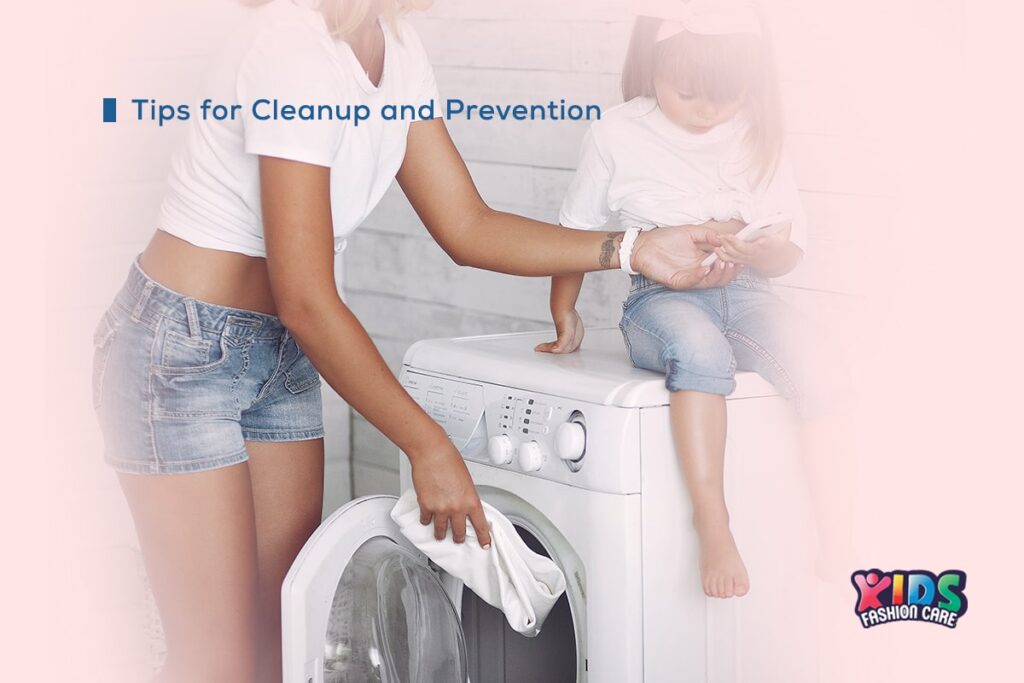
Parents need to be patient when introducing underwear during potty training because there will be many accidents. Young kids have poor bladder control, which is why they need potty training. Here are some tips I can share to help you confidently handle these accidents.
Staying Calm and Supportive
Before anything, parents need to calm down and show complete support to their kids in the event of accidents. Staying calm is essential because kids can sense when their parents are anxious or frustrated by something. Sensing negative emotions will only hurt them and cause them to become frustrated or angry, which isn’t what you want.
Don’t blame or shame them if they fail; instead, be understanding. Negative comments will only hurt their self-confidence and cause them to become bitter and less cooperative. Shaming will deeply hurt their development and cause them mental distress later on.
Be supportive and offer advice to ensure kids develop self-help skills early on. Teach them to wipe up and change clothes from when they are able to teach them to be more self-confident and independent.
Practical Tips for Cleanup and Prevention
If an accident does happen, parents need to clean it up quickly to avoid any hygiene issues. For future prevention, you can carry extra clothes, put on waterproof covers, and layer bedding.
Carry extra clothes in bags so that you can quickly clean up accidents when out. The waterproof covers in cars or strollers will ensure you don’t have to clean up too much in a pinch. Finally, by layering bedding, you will be able to ensure better sleep at night and clean beds even in the case of accidents.
Nighttime Potty Training and Underwear
Once underwear is introduced while potty training and the child becomes more familiar with it, parents can move to nighttime training.
When to Switch to Underwear at Night
Parents can’t start nighttime potty training initially because the process is harder to supervise. That’s why parents should only start when kids are over four and see the signs. The signs are:
- The kids consistently have no accidents when they wake up in the morning.
- Kids are asked to wear their underwear, training or regular, and to bed at night on their own.
Until parents see these signs, kids should wear pull-up underwear to make them feel comfortable.
Waterproof Mattress Protectors and Backup Plans
Parents should install a waterproof mattress protector since kids may have accidents, even with some potty training. Having some backup plans as well won’t hurt. The waterproof mattress protector will ensure that the cleanup process will be quick and easy, even with an accident. Backup plan-wise, parents can limit any liquid to two hours before bed. And, of course, have the child go to the potty before going to sleep to reduce the chances of accidents.
Common Challenges and Solutions
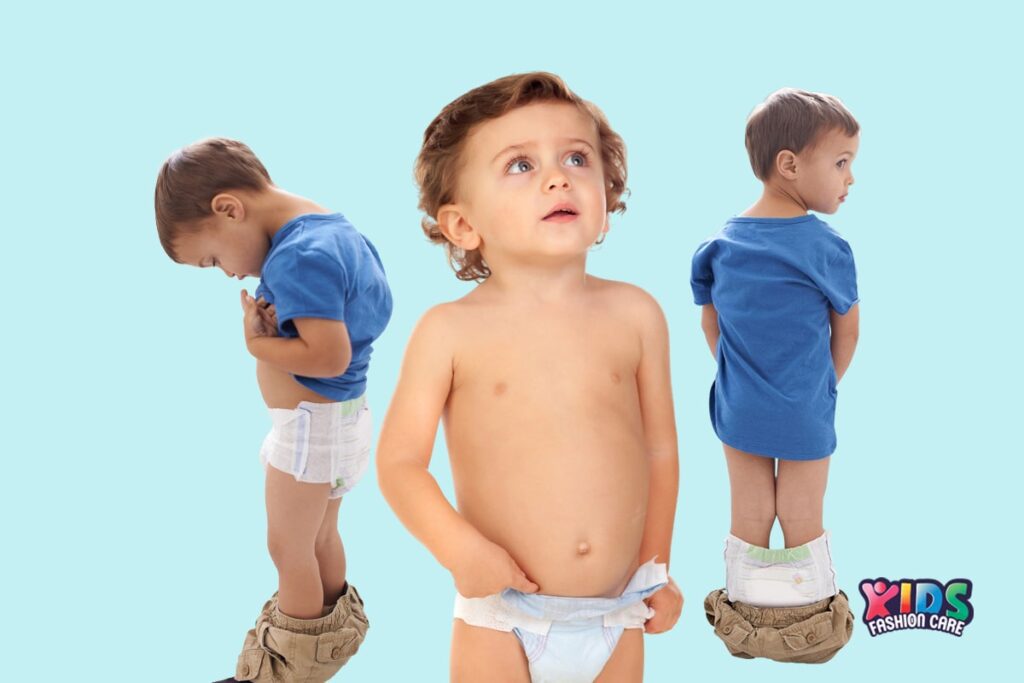
When parents introduce underwear while potty training children, they will face challenges. Some will be simple, while others will be very difficult. I can’t tell you which will be which, but I can share some to make the process easier.
Resistance to Wearing Underwear
In the beginning, kids will be reluctant to wear underwear for a number of reasons. Instead of fighting them, parents should understand why and help to resolve the issue. One way to resolve reluctance would be to have the child pick the underwear they like. This will make the kids more willing because they picked it. Make dressing up a game and picking underwear a mission or task instead of a chore. The more fun the kids have, the less likely they will be fussy. Going commando as a kid isn’t shameful but common at home. Let them be commando at home for some time before trying on underwear again if it makes them comfortable.
Fear of Accidents or the Toilet
For some reason, kids are very fearful of trying new things. Some say it’s because something is new to them, and others say it’s because kids don’t understand that thing. Whatever the case, kids will be afraid of the toilet and the accidents they may have. This is why parents need to assure their kids of both things and make them understand that neither is something to be afraid of.
To do that, parents should read their children’s books about going to the potty and what accidents are. This will help them understand that both things are natural and that parents aren’t mad about their accidents.
Use a smaller potty in the beginning to make it less scary for the kids. Again, be calm and cool throughout the whole time so that kids don’t get afraid or shamed when they fail.
Frequently Asked Questions (FAQs)
When should I switch from diapers to underwear during potty training?
The best time is when your child shows consistent readiness signs, such as staying dry for 1-2 hours, communicating bathroom needs, or disliking dirty diapers. Starting too early can cause frustration, so wait until your child demonstrates both physical awareness and interest in using the potty independently.
Should I use training underwear or go straight to regular underwear?
Training underwear helps bridge the gap with its light absorbency for small accidents while letting kids feel wet. Regular underwear works better for children with a few accidents, providing a clearer sensory connection between their body and potty needs.
How do I handle frequent accidents after switching to underwear?
Stay calm and avoid punishment—accidents are normal learning opportunities. Increase potty reminders, use training pants for outings if needed, and celebrate successes to build confidence while minimizing stress about mistakes.
What if my child refuses to wear underwear?
Make underwear fun by letting them choose designs with their favorite characters or turning it into a game. If resistance continues, try commando time at home first, so they adjust to the feeling before adding underwear to the mix.
Conclusion
Knowing the right time to introduce underwear while potty training kids isn’t easy, but it’s not hard either. If you know the signs and how to make the connection between potty training and underwear, then any parent can do it. So long as a kid can stay dry consistently and is mature enough to want to wear underwear, they are ready.
Parents need to get the right underwear for their kids and stay slow. They must gradually make the child wear underwear for longer periods and be calm and supportive when they mess up. By doing so, parents can help their little ones embrace underwear and the independence that comes with it.

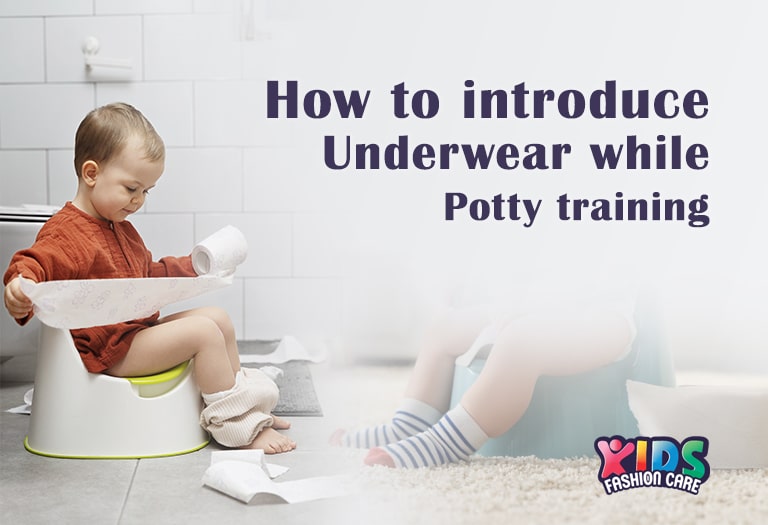





Somebody essentially lend a hand to make significantly posts I might state That is the very first time I frequented your web page and up to now I surprised with the research you made to create this particular put up amazing Excellent job